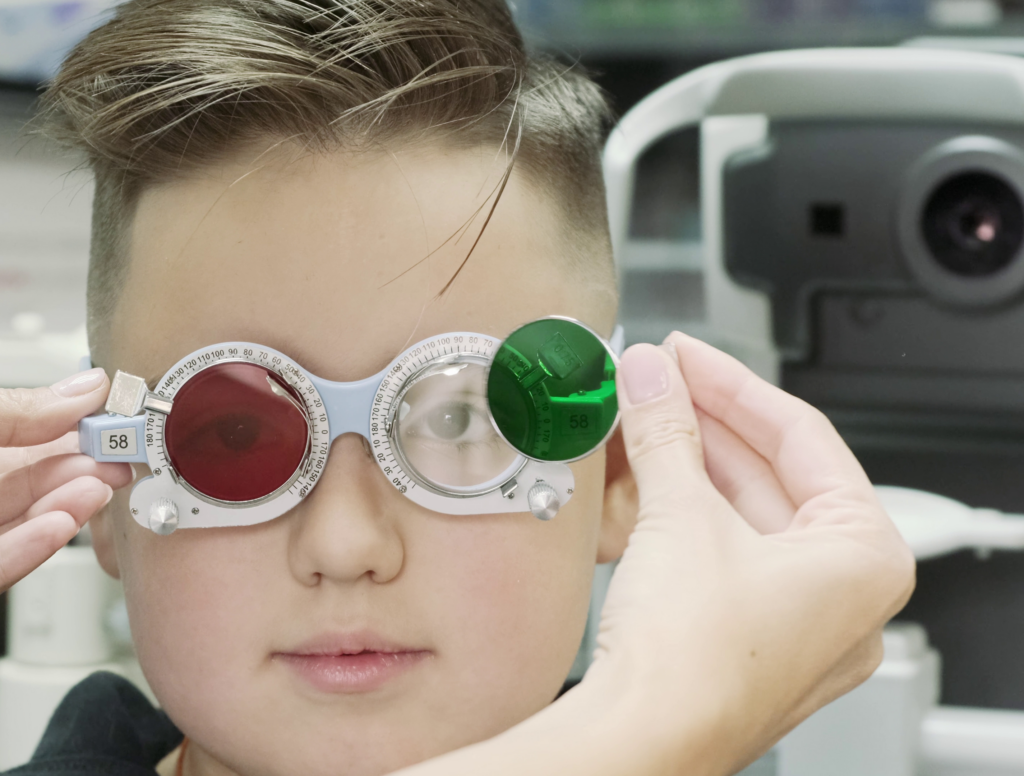Color Vision Deficiency: When Trouble with Colors Means More Than You Think

For many people, the words “color blindness” bring up the classic idea of confusing red with green. It’s often treated as a harmless quirk—something you either laugh about or don’t think much of. But color vision deficiency (CVD) is more than just mixing up colors. It can affect everyday decisions, limit certain careers, and go unnoticed for years—especially in children.
At OptiCare Health, we believe understanding your color perception is part of understanding your full visual health. That’s why testing for color vision deficiency matters more than most people realize.
What Is Color Vision Deficiency?
Color vision deficiency is the inability to distinguish certain shades of color—most often reds and greens, though in rarer cases, blues and yellows can also be difficult to tell apart. It happens when the color-sensitive cells (cones) in the retina don’t respond properly to light.
There are several types:
-
Red-green deficiency (most common, especially in males)
-
Blue-yellow deficiency (rare)
-
Complete color blindness (extremely rare)
It’s important to note: people with CVD usually see colors—just not the same way most others do. A green tree may appear dull brown, or red warning signs might seem faded or hard to distinguish.
It Often Starts in Childhood—and Goes Undetected
Color vision deficiency is usually inherited, and symptoms often show up in early childhood. But it’s not something most children can describe—because they don’t know what they’re missing.
If a child can’t accurately identify colors in the classroom, it may be mistaken for a learning issue or inattention. In reality, they simply see colors differently. Many kids adapt quickly, finding cues through brightness, shape, or context—but that doesn’t mean they aren’t struggling.
Some signs to watch for:
-
Trouble with color-based activities (art, games, puzzles)
-
Confusing colors that are commonly taught (red/green, blue/purple)
-
Difficulty reading color-coded charts or diagrams
-
Frustration with certain books or toys
At OptiCare Health, we recommend early screening—especially for boys, who are statistically more likely to have CVD.
Color Vision Matters in Daily Life
While many people live comfortably with color vision deficiency, there are situations where it can present real challenges:
-
Driving: Difficulty distinguishing brake lights or traffic signals
-
Cooking: Telling whether meat is fully cooked or produce is ripe
-
Fashion or design: Struggling to match clothing or colors on a screen
-
Schoolwork: Reading graphs, maps, or science visuals that rely on color
-
Career options: Certain jobs in aviation, electrical work, or medical fields may require full color vision
Knowing you or your child has CVD doesn’t mean something is wrong—it simply means making smarter choices and adjustments to avoid frustration or safety concerns.
Get Tested, Get Clarity
The only way to know for sure if you or your child has color vision deficiency is through a professional eye exam. At OptiCare Health, we use specialized testing that’s quick, non-invasive, and easy for all ages.
If a diagnosis is confirmed, we offer:
-
Supportive guidance for adapting in school or at work
-
Color-correcting lenses (in some cases)
-
Personalized strategies to improve comfort and clarity in daily life
Understanding your color vision profile can open the door to better confidence, smarter choices—and fewer surprises when colors matter.
